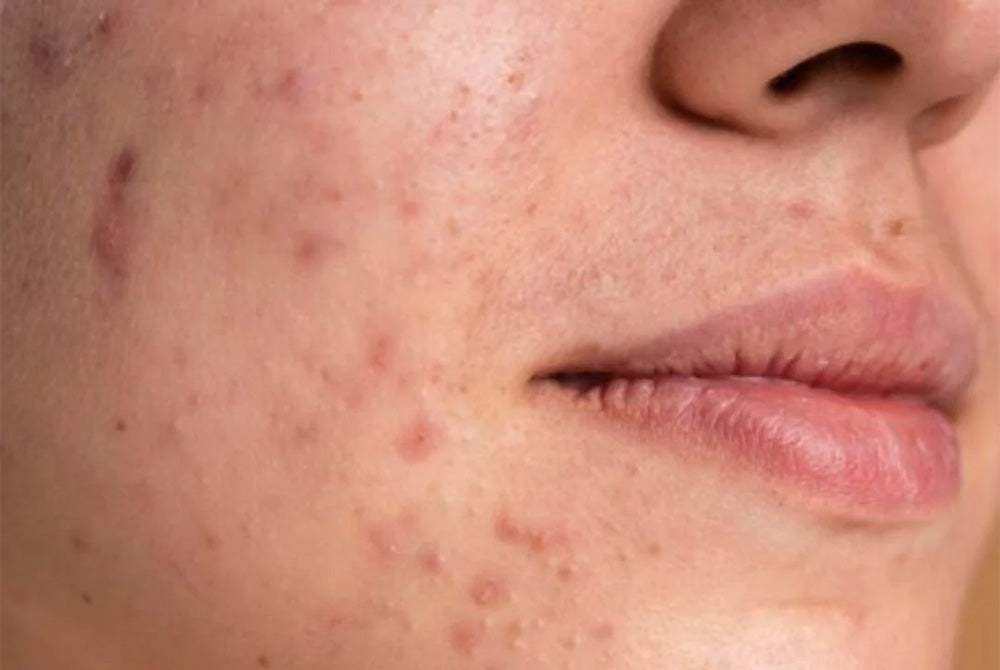Views: 0
The first 6 weeks might just be the most emotionally charged period of your acne journey. As many as 1 in 4 will go through this destabilising challenge – but what exactly is skin purging? And how do you recognise it? Let’s dive in!
What is Skin Purging?
When beginning a new treatment for breakouts using actives, some acne sufferers may go through a period of volatility. Actives in their routine may appear to cause an increase in breakouts and blocked pores. While skin adjusts to a new regime, it dislodges congestion lying below the surface of the skin – a process known as “skin purging”.
I call this acne turbulence. It can be an uncertain time, and the challenge is to distinguish skin purging from skin irritation. How do you tell the difference?

Skin Purging Vs. Skin Irritation
The reality? You can experience both skin purging and skin irritation at the same time – because both scenarios are common.
Classically, skin purging happens where you are usually prone to breakouts. It unearths dormant acne breakouts under the surface, but instead of these lesions appearing over the course of 6 months, it happens over 6 weeks. This can feel like a big change in tempo from your usual breakouts.
Skin irritation is more generalised. An adjustment period is not uncommon when acne is treated with ingredients that work on the root cause of blemishes, such as azelaic acid or retinoids. Once your skin adjusts to a new regime, it should stop causing new breakouts and move on to clearing your skin. As this can take time, patience is key, as is the right support kit. Barrier dysfunction is part and parcel of acne, so make sure you have an acne-friendly barrier repair cream on standby when starting your acne journey.
How Long Does Skin Purging Last?
The skin purging period is unpredictable. Flares are seen within 1-4 weeks of beginning your skincare routine, and typically last between 2-8 weeks. Once it has passed, positive results should be seen soon thereafter. This is often most severe in those who have lots of closed comedones to begin with – those little skin-coloured bumps that you can see under the surface of the skin. When I see this in my patients, I warn them that things will look worse before they look better.
If the skin purging stage is really troublesome, it can be helpful to decrease the frequency of your actives by alternating days of use. Stick with it – in time, things will likely improve. When the frequency of new spots starts to reduce, increase the frequency of your actives again. This will get you through into the land of retinoid nirvana more speedily.
How to Calm Skin Purging
The other thing that’s helpful is to combine an anti-inflammatory ingredient like niacinamide alongside your retinoid, to help calm skin purging.
That’s why I formulated my Flawless Nightly 2% Retinoid Serum with both a retinoid and azelaic acid (to unclog pores) but also 5% niacinamide and 1% bakuchiol for calming balance in the early part of the treatment journey. When paired with Flawless Brightly 10% Azelaic Acid Serum, amazing things can happen to your skin to help eliminate those clogged-up pores.

In terms of oral treatments for acne, the one treatment of note that can do this is Isotretinoin – for much the same reason that topical retinoids do it. They stir things up at the root cause. Again, the approach is often the same – reduce the dose until the storm passes, and then dial it back up.
The bottom line – you didn’t arrive here overnight, so don’t expect an overnight solution. Patience and persistence is the key. You’ll get there, just keep moving forward a day at a time.
Learn more about how to treat breakouts with Dr Sam’s go-to routine for glowing, acne-free skin.


